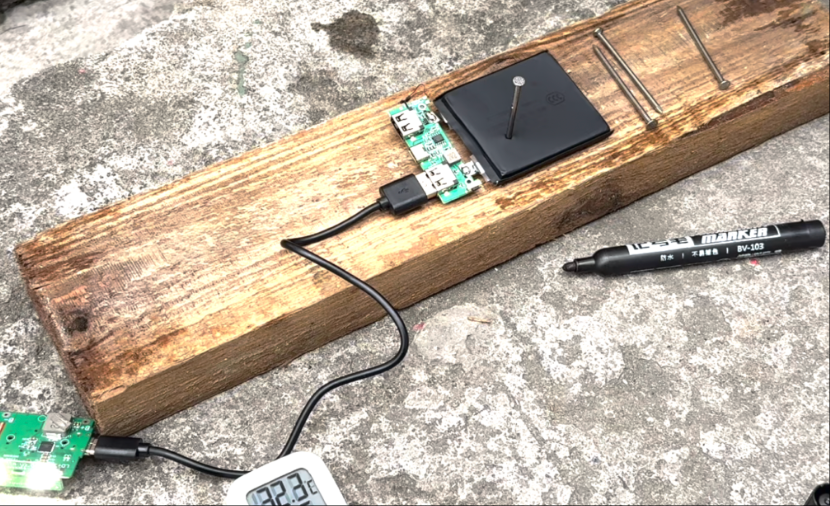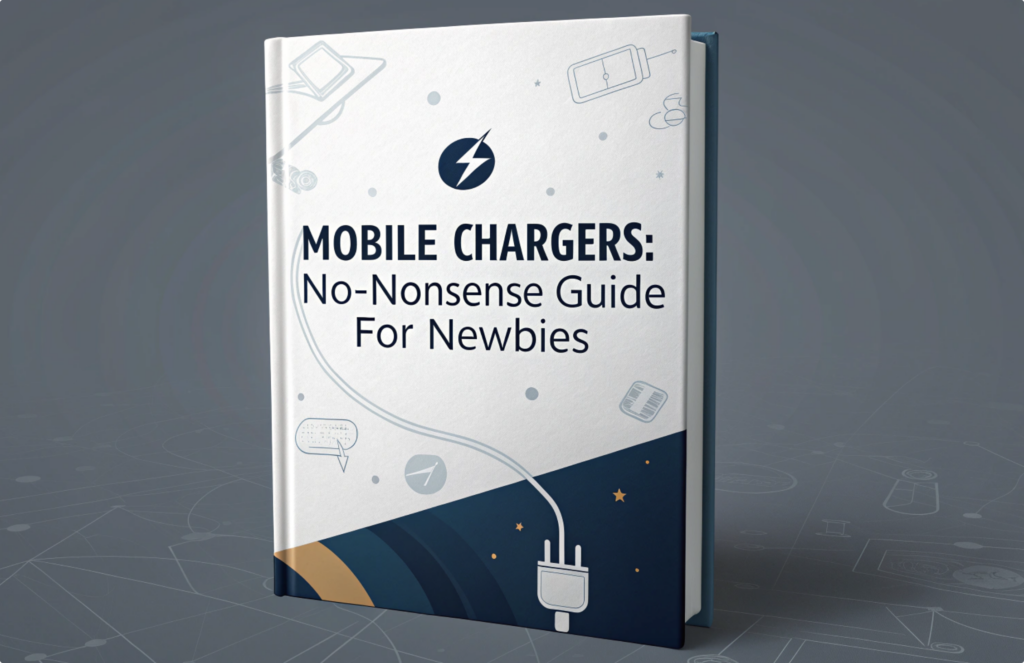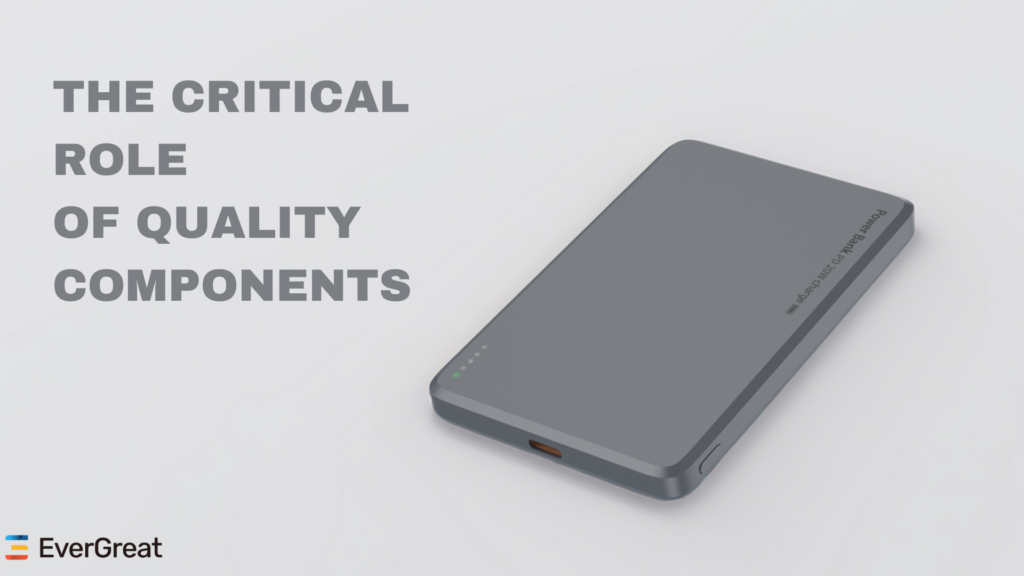1. The Recent Recall Incident: A Wake-Up Call for Battery Safety
Recently, two of the biggest power bank brands, Anker and Romoss, have been caught in a major recall event due to safety concerns related to their lithium-ion batteries. Anker, which had to recall over 1 million units due to overheating and fire risks, and Romoss, which faced similar issues with more than 500,000 units recalled, have put the spotlight back on battery safety.
These incidents highlight the risks associated with lithium-ion batteries, which power most of today’s mobile charging devices. While lithium-ion batteries are the go-to option due to their energy density and compact design, they also carry inherent risks, such as thermal runaway, overheating, and fire hazards. A slight flaw in a cell’s internal structure, even smaller than the tip of a needle, can trigger a catastrophic failure. This calls for the urgent need for safer, more reliable battery technologies in portable power sources, especially in an era where the reliance on portable charging is rapidly increasing.
2. Battery Types in Power Banks
The power bank industry primarily uses the following types of batteries:
- Lithium-Ion (Li-ion): The most common battery type used in power banks due to its high energy density, lighter weight, and reasonable cost. However, Li-ion batteries are susceptible to overheating and thermal runaway if damaged or improperly used.
- Lithium Polymer (LiPo): These batteries are similar to Li-ion but have a gel-like electrolyte that allows for a thinner form factor. LiPo batteries are generally considered safer and less prone to leakage compared to Li-ion. However, they still suffer from thermal instability and limited charge cycles.
Despite their advantages, lithium-ion and lithium polymer batteries are still vulnerable to issues like heat generation and limited lifespan. As a result, there has been increasing interest in new battery technologies that could address these concerns while maintaining the performance standards required for modern devices.
3. Semi-Solid State Batteries: The Next Big Thing in Power Bank Technology
Enter semi-solid state batteries. This new technology represents an evolution of traditional lithium-ion cells, offering enhanced safety and efficiency. Semi-solid state batteries use a combination of solid and liquid electrolytes, which helps stabilize the internal structure and prevent the risks associated with conventional lithium-ion and lithium-polymer batteries.
Advantages of Semi-Solid State Batteries:
- Improved Safety: One of the primary advantages of semi-solid state batteries is their enhanced safety. The solid electrolyte significantly reduces the chances of thermal runaway, a common issue with liquid-based electrolytes in traditional lithium-ion batteries. As a result, the chances of fire or explosion are drastically reduced.
- Longer Lifespan: These batteries tend to have a much longer lifespan compared to traditional lithium-ion batteries. The solid electrolyte does not degrade as quickly as liquid electrolytes, meaning the battery retains its efficiency and capacity over more charge cycles.
- Higher Energy Density: Semi-solid state batteries can store more energy in the same amount of space as lithium-ion batteries, which means power banks using this technology can achieve higher capacities while maintaining a compact and lightweight form factor.
- Environmental Impact: Semi-solid state batteries are potentially more environmentally friendly, as they typically do not contain harmful chemicals like cobalt and other toxic materials often found in traditional lithium-ion batteries.
With these benefits, semi-solid state batteries are poised to become a game-changer in the power bank industry. They could eliminate many of the safety concerns that have plagued current battery technologies, providing a safer, longer-lasting, and more efficient solution for consumers.

4. The Future of Semi-Solid State Batteries in Power Banks
The rise of semi-solid state battery technology could shape the future of power banks in several important ways:
- Wider Adoption: As the technology matures, we can expect to see more power banks equipped with semi-solid state batteries hitting the market. With advancements in manufacturing techniques, the cost of semi-solid state batteries will likely decrease, making them more accessible to both consumers and manufacturers.
- Faster Charging Speeds: Semi-solid state batteries can potentially support faster charging rates without overheating. This means power banks could charge not only devices more efficiently but also be charged themselves in a fraction of the time required by traditional lithium-ion power banks.
- Sustainability: With the growing concern for environmental sustainability, semi-solid state batteries present a more eco-friendly alternative. This technology could reduce the dependency on rare earth metals, which are not only costly but also pose environmental risks when mined.
- Higher Performance: As manufacturers and research institutions invest more into this technology, we may see even more significant advancements. Improved energy density, faster charging, and safer designs could result in power banks that are more powerful, reliable, and user-friendly.
Data and Research Support:
According to a 2021 report by the Department of Energy, semi-solid state batteries offer up to 30% higher energy density than traditional lithium-ion batteries. Furthermore, these batteries have shown a 50% reduction in thermal runaway risks, making them far safer for high-capacity devices like power banks.
Additionally, leading battery manufacturers, such as Samsung SDI and Panasonic, are already investing heavily in semi-solid state battery development, anticipating commercial availability within the next 5-10 years.
Conclusion: A Bright Future for Power Banks
The Anker and Romoss recall incidents have raised important questions about battery safety in the power bank industry, and the need for a safer, longer-lasting alternative is now more urgent than ever. Semi-solid state battery technology offers an exciting new solution that promises enhanced safety, higher performance, and longer lifespan. As this technology matures, it will likely become the standard in power bank design, providing consumers with a more reliable and eco-friendly option for powering their devices.
As we move forward, it’s clear that power bank manufacturers must embrace innovation, particularly in the development of safer, more efficient battery technologies. Semi-solid state batteries offer a promising path toward achieving this goal, marking a turning point in the evolution of power banks and portable energy storage solutions.
In conclusion, the future of power banks is bright, with semi-solid state batteries leading the charge toward safer, more sustainable, and higher-performance mobile power solutions.









